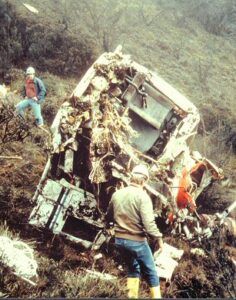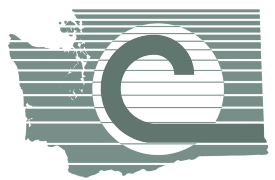Why do people choose to work with your conservation district? Is it because you are the only vendor available for the offered services? Is it because they know you and trust you? Perhaps it is because someone they trust has recommended you. Or perhaps it is just because they believe they will get good value in exchange for their time and money.
For those with damaged lands, conservation districts offer hope and proven practices. Hope keeps us going when the tasks on our plate look insurmountable. Practices are the step-by-step tools that, when used with professional assistance, change landscapes.
For those with businesses, the value presented by working with conservation districts is phenomenal. Whether it’s stormwater management, erosion control, or animal health and productivity, conservation districts return tremendous value from a business perspective. Working with a conservation district also provides opportunities for public recognition of the good intentions and actions of the business.
For people, connecting with land and water can be healing. Gardeners know the wonderful feeling of getting their fingers into good, fertile soil. When people help restore a riparian area or install a heavy use area, they are investing part of themselves in that work.
These thoughts came together for me this week as I faced the yearly anniversary of an event that could have killed me. In 1985, I was in a helicopter accident in an isolated place on a primitive, remote island near Australia. The helicopter’s tail rotor contacted a cliff and we tumbled more than 500 feet down a mountainside. As we tumbled and impacted, I could hear the engine whining as the composite helicopter blades pounded into the ground and snapped and shredded.

We did not roll smoothly down that mountain. The fuselage of the helicopter, being egg-shaped, launched into the air every time the pointy end of the egg would roll on the ground.
In those moments, I knew that I could not survive this event. As we tumbled and impacted down the mountain, I was consumed with thoughts of my wife and our unborn child, wondering how they would fare with me gone.
And then I realized that we were no longer tumbling. We were still. As I gazed out from my seat in the front of the helicopter, I could see that the nose had been torn away along with the control panel. The floor was broken right to the edge of my seat brackets. The plexiglass windscreen was, of course, also gone. I was — astonishingly — still alive.
Sunday is the 36th anniversary of that 1985 accident. I have chronic pain from the injuries I sustained but I bless that pain because it reminds me of how very lucky I am to be here, in the role of serving a cause and a community I believe in.
The anniversary of the crash is not the only reason I am reminded of healing. This week, I met a young man who is full of pain that he can’t fully share. He is a sales clerk and as we worked through our transaction, I struck up a conversation after noticing some of his unique tattoos.
He had been in the Navy and now works for the store I was visiting. At 31 years of age, he has a significant other and two young children. His father died three years ago. There is nobody that he can talk to about his military service.
As I drew his story from him, I learned that he was not a Navy SEAL. Instead, he was part of a group that would go in when the SEALs needed help. We spoke of a few events that left him emotionally scarred, including a recovery mission where he was one of only a few survivors. He recounted still waking up screaming, feeling trapped, covered in gore.
He can’t talk to a therapist or a minister. He can’t talk to his friends. His unit was split up when they were discharged so he has no contact with his teammates. His father, who was a Green Beret in the Viet Nam era, is no longer in his life. “My father raised me as a weapon and the Navy finished the job,” he said to me.
I asked if there was anyone he could talk to about his feelings and he said yes, his significant other was very supportive, but he couldn’t share any details with her. He feels very much alone in trying to live with the after-effects of his service for our country.
By this time he was trembling, so to give him a break, I told him a little bit about my helicopter crash and how I lost my friend who was the pilot. I talked about how a sound or a scene in a movie could instantly trigger my memories of the crash, in full detail with sound and color and even the feeling of the impacts of the fuselage on the hillside. I described how I was eventually able to talk about it but even now, 36 years later, it is still something I try to put in a box in my mind, even though it is with me every day.
I said that my experience was a pale echo of what he must have gone through, so it was hard for me to truly understand how deeply he was affected. We had a quiet, introspective moment as we bonded for an instant, accepting each other’s pain in that serendipitous intersection of our lives. I won’t say it was a joyous moment but it definitely was a calming, serene pause in the storm of emotions that we were both feeling.
I think that after talking with him, I understand much better how important is the work of conservation districts with veterans. It’s not just about giving our veterans an opportunity to learn new skills and to contribute to their community. Working with conservation districts and land also gives our veterans a chance to heal as they sink their fingers into the earth and plant living things that will grow to produce and protect other life.
For my young storekeeper, connecting with the land around him might be a way that he can pour his troubles out without anyone else hearing the gory details. We can have a conversation with soil, water, plants, and animals. Those conversations can be private and yet very healing. Working with natural resources can help create a stronger “why” to keep working on healing and personal growth.
I encourage you to think about how your conservation district’s programs and services could affect people in ways that you may not have recognized. Restoring soil health and repairing riparian resiliency heals more than just natural resources: it can heal people, too. Even if you don’t have an active veteran’s program at this time, perhaps this story will help you decide to reach out to your local veteran’s group the next time you need some volunteers. We can all use some healing, and it is a magical thing when we can offer that opportunity to others in our community.
